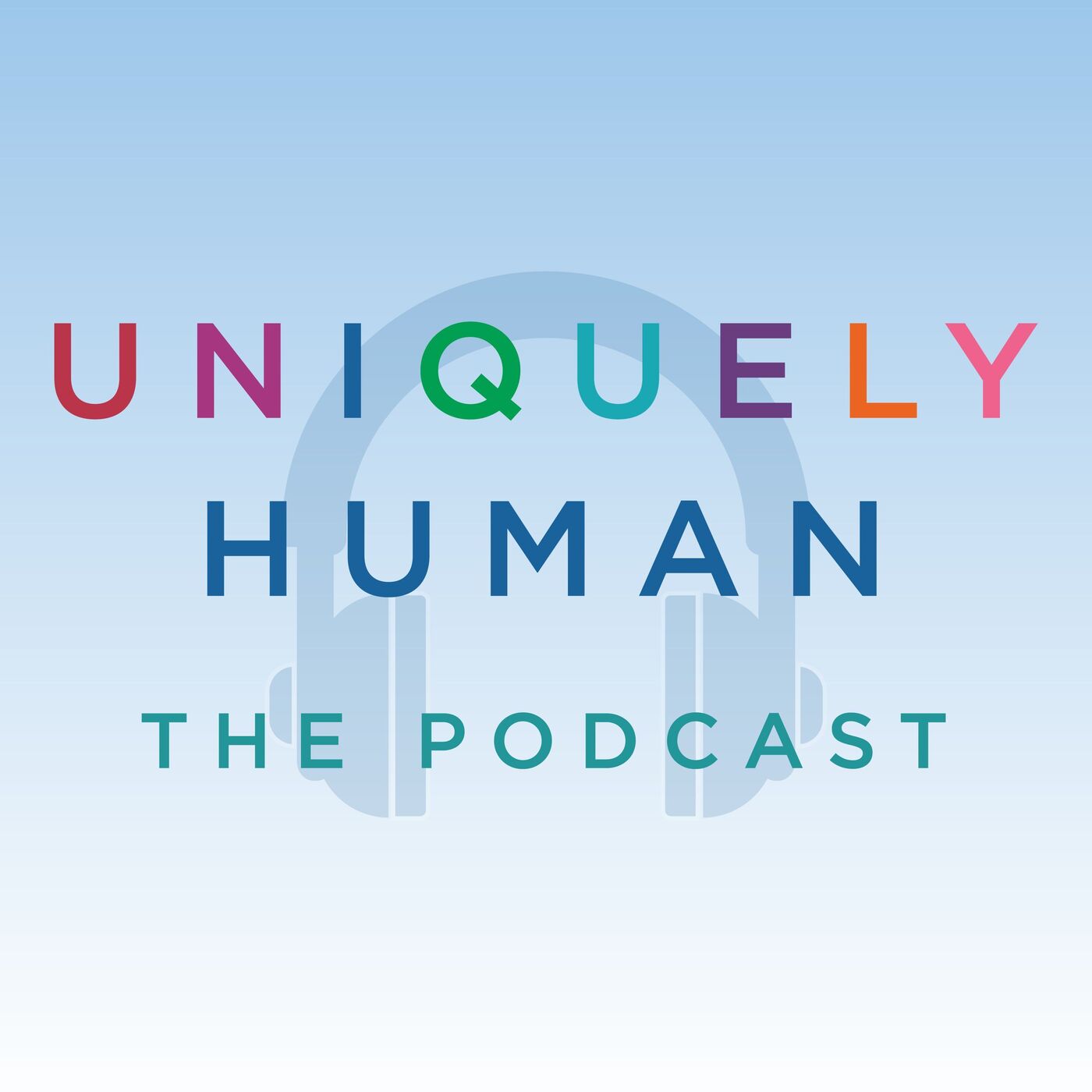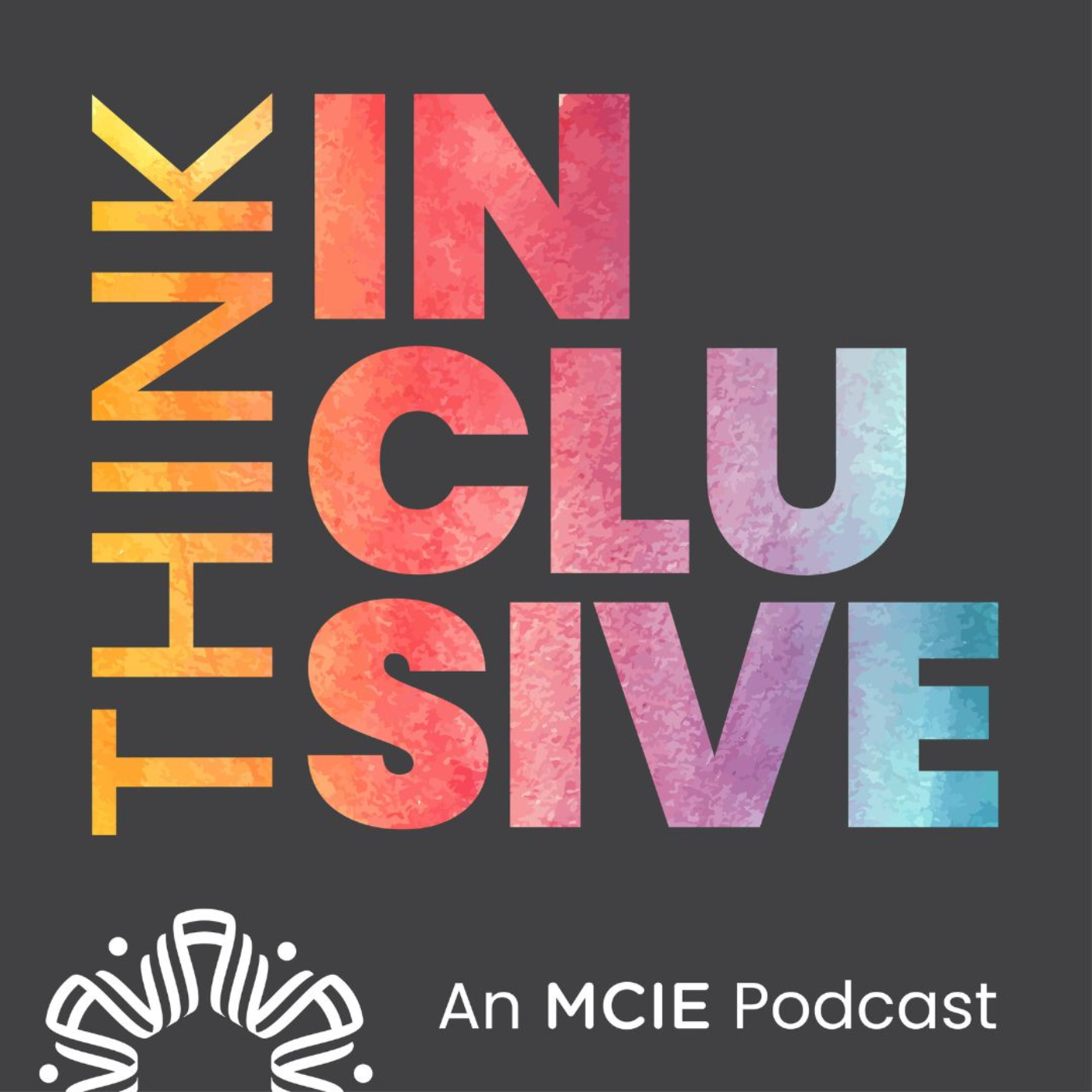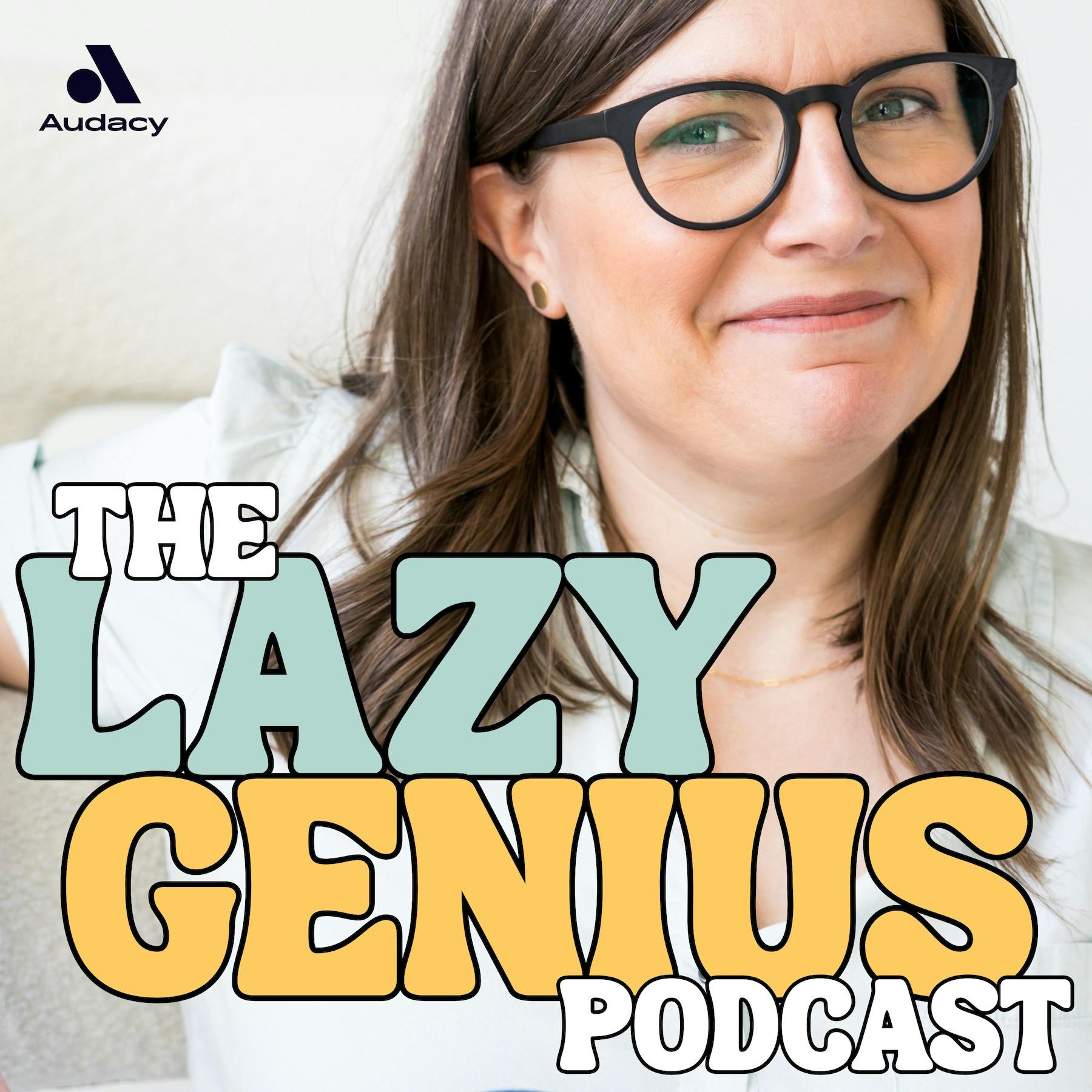
Creative Piano Pedagogy
This podcast is an enriching resource designed specifically for piano teachers and music educators working with out-of-the-box students: students with disabilities, physical or learning differences, gifted and 2-E learners and neurodivergent students. Each episode delves into innovative teaching strategies, offering insights and practical solutions that promote creativity, inclusivity, and approaches teaching from a positive and student-first environment.
Pedagogue, researcher and music educator Dr. Elizabeth Davis-Everhart will demystify topics such as technique, communication, piano methods, understanding behaviors, autism, ADHD, dyslexia and much more- all with a focus on encouraging teachers to meet the diverse needs of their students and inspiring them to embrace new ideas and cultivate the musical potential of every learner.
Creative Piano Pedagogy
09- Summer Series: Popping Bubbles, Swatting Flies, and Creative Approaches for Coordination/Finger Control
Ever had a student struggle with hand coordination and finger control despite their best efforts? You're not alone. This deep dive into the fascinating connection between neurodiversity and piano technique reveals why many students—particularly those with ADHD or autism—find fine motor skills (like piano technique) challenging.
Whether you teach neurodivergent students or simply want to expand your teaching toolkit, these strategies will enrich your studio approach and help every student thrive at the piano.
Links to teaching tools from this episode:
Pop-it Fidget Toy
Squishy Stress Balls
Play-Doh
Play-Doh Mat
Fly-Swats
Lap Drum
As an Amazon Affiliate, I may receive a small commission if you purchase through these links at no extra cost to you. This helps support the podcast and research blog!
Find the full transcript here of this episode and all past episodes!
📚 Join the waitlist for the next Piano Teachers Book Club Session!
Subscribe to Elizabeth's email list here so you won’t miss future courses, freebies, teacher events and more.
Let's stay in touch!
On the website/blog
Follow on Facebook
Follow on Instagram
Follow on YouTube
You can find all of Elizabeth's favorite repertoire and teaching tools on the Amazon Storefront (affiliate link)
Questions or suggestions? Send Elizabeth an email:
elizabeth@creativepianopedagogy.com
As an Amazon Affiliate, we may receive a small commission at no additional cost to you if you purchase through our links. Thank you for helping support the podcast!
Hello friends, thanks for tuning in. This is episode 9 of the Creative Piano Pedagogy podcast and we're in today for another episode in our summer series, "so I have this student. Huge thank you to all the teachers who have sent in questions or topics you would like discussed. I am loving all of the suggestions and ideas and you've given me so many thoughts for future episodes and series. So thank you very much and please don't hesitate. If you have a question, even if it's not something you're particularly thinking of for this series and you're just wondering if anybody has any suggestions for you, don't hesitate to send me a message or an email. You can always find me on Instagram, facebook, creative Piano Pedagogy, or shoot me an email at creativepianopedagogy at gmailcom. I love hearing from you all.
Dr. Elizabeth:There's one new thing I want to tell you about today, and it's kind of exciting. Up until this point, this podcast has been an every other week podcast, or that's the goal. We have missed a few, but moving forward, this fall it's going to be an every week podcast. I am so excited to commit to doing that with you and for you. We have some really exciting guests that you're going to hear on the new season this fall, as well as the launching of YouTube videos of the podcast recordings, as well as a whole bunch of YouTube tutorials, repertoire, teaching ideas, you name it. I am really excited. If you're interested in helping me keep this whole podcast thing going and you have a tangible way to do that, I have a new thing you can do. It's called buy me a cup of coffee". There's a link in the description where you can literally just say thank you and give a little bit to this project. I hope to have another way for you to kind of join me on this venture in the future through Patreon. But for right now, if you have a dollar to spare, you can be sure that that is going to help all of this research continue and just gives a little bit of encouragement and support. But if you don't, please feel free to keep listening. Of course, I am happy for anyone who's listening to be part of this little community and more on that community aspect later because we have something else new coming this fall as well.
Dr. Elizabeth:So, jumping right on into episode nine, we have a great question today that was actually submitted by several different teachers who are wondering about the same topic, which means we've hit something good today, since so many people are asking the same question. I think it will apply to a lot of piano teachers and a lot of students. And here is that question: "Are there specific techniques or exercises you recommend for improving hand coordination or finger independence? How exceedingly practical. If you've been listening to the last previous episodes, we did a few episodes on rethinking piano technique that have been received with really positive feedback. If you haven't had a chance to listen to those, go back to episodes three and four and check those out, because I think that will beautifully tie into today's topic.
Dr. Elizabeth:I've seen a lot of questions come up in piano teacher Facebook groups recently about finger and hand coordination and each time there's one of these questions, it's almost always relating to a student who is neurodivergent- usually ADHD or autism, or both. If you have neurodivergent piano students who also struggle with good technique, finger and hand coordination, that is not a coincidence.
Dr. Elizabeth:Muscle control, motor planning and coordination are strongly linked to neurodiversity, and students who are neurodiverse are very likely to have difficulty with fine motor skills. The term 'motor planning' might be a new one for you and it's such an underrated but very pivotal part of playing any instrument and specifically thinking in piano, because we use our fingers for this activity, don't we? The technical term for motor planning is Praxis, and that is the cognitive process that allows us to plan and sequence movements. You might be surprised just how many steps are involved in this action of sequencing our movements. So, just to put it in perspective, in order to move our body or a finger, your foot, etc. You must do three things. The first is ideation, which is thinking about what needs to be done. Next is planning, and that is sequencing the steps involved in that action. And the third is execution, coordinating the body's muscles to perform that action. That's a lot of steps just to move one body part or one digit, one finger, one body part or one digit, one finger.
Dr. Elizabeth:Now, let's put this in terms of piano lessons and finger movement. So first, a student has to think about what needs to be done, such as hmm, I need to move my right hand finger. Three to treble G Got it. Next, a student has to plan the sequence and steps to make it happen, such as I need to pick up my right hand from the piano keys and move it to the right on the keyboard and aim my finger three for treble G Very technical. Finally, they have to execute it, actually coordinate the body's muscles to perform that action. Since this generally applies, and greatly applies, to our neurodivergent students, keep in mind that while they're doing this they're also fighting distractions from the environment, sensory overwhelm. They're resisting tics and impulsive behaviors and movements and having to put all of their focus just on this one task. At the same time they're also having to coordinate and think through what the left hand has to do. All of these steps we've just listed are only for moving the right hand finger three Wow, that's a lot.
Dr. Elizabeth:I hope that gives you a bit of perspective, appreciation and even compassion for your students who might struggle with motor planning. I cannot imagine the frustration of knowing what your body needs to do but getting stuck and overwhelmed with just the physical action of helping your body and brain work together to do it. So why did I go down this rabbit trail of motor planning? I promise there is a very valid reason. This hidden and often unknown comorbidity can lead to a lot of issues with finger and hand coordination in piano and that results in frustration and overwhelm when your students try to play the piano. In a piano student, it might look like them laboring and taking extensive amounts of time to follow your instructions of what to do with their hands, and it also may require a lot of repetitions for them to be consistently successful and confident. By the way, students with motor planning delays or struggles may have difficulty with sequencing and performing other tasks that have multiple steps, such as getting dressed, completing a puzzle, playing a game, tying their shoes and so on, so this might show up in other areas of their lesson as well. We know that our neurodivergent kiddos find a lot of stability in routines, so they might struggle with new or unfamiliar tasks, and we also know that they learn best in a supportive environment where they're free to do repetitions and keep trying, without pressure or high tension. They respond well to visual aids. This can be a big one for us piano teachers. If we put all of that together, maybe we can list out a few ways for you to help your students improve their coordination and finger movement while still maintaining a supportive lesson environment.
Dr. Elizabeth:Suggestion number one use the instrument instead of your words. Instead of giving verbal instructions for what your student needs to do with their fingers or hands, teach them in a copycat kind of way where you use the piano and you only do the first step. Then they copy it. So, for example, if your goal is for your student to move their left hand finger one from middle C down to base G, demonstrate this by giving the student one thing to watch while you play it. When you're demonstrating, you could tell the student something like I'm going to pick up my left hand and move my thumb down to G like this Hop, then ask if they'd like to do it together then by themselves. It's so simple. Of course, you can customize this for your student and you should Skip the narrative and just have them copy you. You can make it really fun like a challenge, like I wonder if you can do this. You could even have them close their eyes and do it that way, whatever engages them and whatever works best for them.
Dr. Elizabeth:The important part is to just use the piano. It is our visual guide and it shows our students, using the instrument rather than verbal instructions, what they should be doing. So we always want to go to the instrument first rather than resorting to lecture, because when we start with a lecture with verbal instructions, it may not work and we have to resort to the instrument anyway. So let's just don't waste any time or energy and we'll start and end with the piano Done. This principle also ties in beautifully with the music education philosophy of sound before symbol. This was made really popular by Edwin Gordon from music learning theory. You should check into him if you haven't read anything about him. But sound before symbol, this concept of going from the known to the unknown, and in this case the fingers before the lecture.
Dr. Elizabeth:Suggestion number two is isolated teaching and learning. When neurodivergent students with hand and finger coordination struggles are learning to move their fingers on the piano, they do not need simultaneous stresses of focusing on things like dynamics, articulation, phrasing, reading music and juggling a whole bunch of layers. One of my favorite things to do is to choose a really fun rope piece that focuses on an element of coordination between the hands or whatever finger or hand movement I'm working on with that student. Without the presence of music to read and all of the decoding of the musical score, my student can truly focus their fingers and coordination of those movements. Without so many layers it really takes a lot of stress off of the learning environment and they can just focus on that one goal and they usually accomplish it really really well because their ears are so good. Another fantastic thing to do that's also very fun is to use improvisation to work on coordination and finger skills. This is especially wonderful because you can really isolate the skill and have the student just use their left hand or just their right hand, then switch and use the opposite Again. This is focusing on just the skill you need to emphasize, without added layers of music.
Dr. Elizabeth:Reading and decoding that score. For patterns with tricky coordination between the hands, it's also really helpful to tap it in a very slow motion, saying left, left, right together or whatever pattern is correct for the piece they're playing. So having them tap their hands on their legs or on a drum, saying the hand that's going to be playing and the pattern in the rhythm of that you're going to be playing it. Rather than focusing on the specific notes, you're focusing on the gestures or the pattern of the hand, and that is so helpful. It can also be really great to use a colored pencil and draw a line between the treble and bass clef notes that are supposed to be played at the same time. Love to do that in my music. This also works really well for students with dyslexia, to help them tap the rhythm and just think about the coordination of it rather than focusing on how it looks in the score.
Dr. Elizabeth:My third suggestion for you is to make it fun. This is where I like to get really creative, and if you have seen any pictures of my teaching setup on Instagram or Facebook, you know I have a pretty substantial collection of teaching manipulatives. I think I actually owe you a little tour of that in a video, so I'll try to do that soon. But I love to pull out all of my creative things and make it very fun for my students. One of my students' favorites is the poppet. These are the silicone things that were super popular a few years ago and they have little bubbles that the students can poke and it kind of makes a little pop sound. They come in a variety of shapes and sizes. I prefer pretty large ones for this activity I'm going to share with you, but you could use them of any shape and size.
Dr. Elizabeth:I love to use a poppet to practice using specific fingers in like a finger pattern order, so students can aim for the bubbles and pop them. Pattern order. So students can aim for the bubbles and pop them. You could do this with a set tempo, like with the metronome, with a backing track. Sometimes I will play an accompaniment on the piano and then my student has to adjust their speed of bubble popping with my piano playing. This is really good for students to practice coordinating those muscles and finger movements with a tempo. It's also really good for them because they're popping those bubbles with a firm finger. That first knuckle is quite firm. No flat fingers are allowed. It's quite difficult to pop them with a flat finger. Students could also write their own finger number pattern. They could sort of compose their own finger pattern like 3, 3, 1, 4, 5, 5, 2, or whatever it might be. They could even use the finger number pattern from their piece. So if they're working on a piece that has a tricky finger pattern, especially if it's using fingers 2, 3, four or five that would probably be easier. You can definitely throw the thumb in there too. It's a great way to use something creative and fun.
Dr. Elizabeth:Another one of my studio favorites is when I pull out the Play-Doh. Now you're probably going oh this is so messy. It's actually not. We do it on a laminated mat or something like that to help with the mess, but it really, really helps for students to practice poking their fingers into the Play-Doh with firm fingers. When I'm teaching technique or helping students with finger control and finger movement at the keys, the word poke is one I use a lot because when you tell kids to poke something, they'll often do it with quite a firm fingertip without being prompted. So when I tell my students to poke the keys, that really helps them to poke each finger on the key Poke, poke, poke. So I'll use that word a lot For using Play-Doh.
Dr. Elizabeth:You could even take Play-Doh and make little balls of it, like maybe four, three or four different balls, and have the students bounce from one to the other, poking their finger into the Play-Doh in a steady beat. This is a great way to practice having kids play a repeated finger like two, two, two, or even teaching them to play back and forth between multiple fingers when that motor planning is so tricky for some of them. Another fun thing to do is to pull out a squishy ball and toss it back and forth between either the student's hands or gently with you as the teacher, to a set tempo or music in the background. Irina Gorin does this in her method Tales of a Musical Journey and it is such a great exercise exercise. It helps to build big muscle coordination, develop a sense of rhythm in the body with the hands and the arms, and it also coordinates big movements with the rhythm and meter. It's also just really fun and an opportunity to laugh and enjoy a unique rhythm exercise that could be very helpful for your student.
Dr. Elizabeth:This last suggestion under my fun category might make you giggle, but one of my favorite things to pull out for working on big muscle coordination is my fly swats Literally the things you get at the dollar store that you use to kill insects. That sounds disgusting and icky, but I promise I don't use fly swats that have been used to squash bugs. Mine are two colors, one is blue, one is yellow, and I've actually kind of decorated them with stickers and things. It's kind of hilarious, but I love having my students use these to practice rhythm and coordination between the hands and their arms. This works beautifully for young learners like age three, four, and for older learners alike, because if you're tapping out the rhythm of a section or just practicing coordination, it's brilliantly fun and very unexpected for your teacher to pull out two fly swats.
Dr. Elizabeth:Okay, my fourth idea is for you to remember the long game.
Dr. Elizabeth:Since fingers, muscle control and coordination are all key aspects of playing the piano, you cannot or should not expect for one week of exercises or etudes to fix the issue for good. As a student learns and grows, their coordination and muscle control will develop Similarly. As their body grows, those issues may pop up from time to time or even morph into something a little different. Our goal is not to come up with a short-term fix and hyperfixate on these struggles until they go away, because they won't go away. That will just stress out our students even more and direct their attention to their own struggles. Our goal is to find ways to help support our students, find techniques that actually work for them, reminding ourselves that quote-unquote good technique for our student might look different than somebody else's neurotypical student, and that is perfectly okay. Creating activities and finding music to help our students grow and confidence is really important in this long game process. The more opportunities our students have to practice and build on these skills, the more opportunities they will have to be successful and then the more confident they'll become.
Dr. Elizabeth:I hope this helps provide a few ideas for teaching students who might struggle with coordination. I know this can be a frustrating thing to work on, because coordination and finger control are literally at the heart of piano teaching and piano playing. You cannot separate piano playing from these other elements, but I want to encourage you not to get stuck in what's not working for your student right now. Give them so many other opportunities to be successful with the skills they have, while digging out a few creative ideas to help them improve. So focusing on their strengths while still building up the areas they need to work on, but not hyper fixating on those weaknesses. That's all for today. I hope you've enjoyed today's episode. Please feel free to reach out on Instagram, Facebook or email with any ideas you have, and I will look forward to being back soon.
Podcasts we love
Check out these other fine podcasts recommended by us, not an algorithm.

Field Notes on Music Teaching & Learning
Ashley Danyew
Coffee with Christina
Christina
Uniquely Human: The Podcast
ART19 Uniquely HumanADHD Experts Podcast
ADDitude
The Piano Pantry Podcast
Amy Chaplin
Piano Inspires Podcast
The Frances Clark Center
TopMusic Piano Podcast
Tim Topham
Piano Puzzler
American Public Media
Composers Datebook
American Public Media
Artists for Joy
Merideth Hite Estevez
Think Inclusive
Tim Villegas
THE AUTISM ADHD PODCAST
Holly Blanc Moses
Hidden Brain
Hidden Brain, Shankar Vedantam
The Lazy Genius Podcast
Kendra, The Lazy Genius